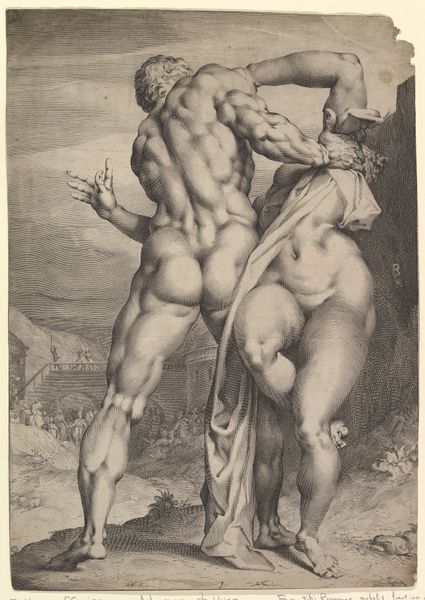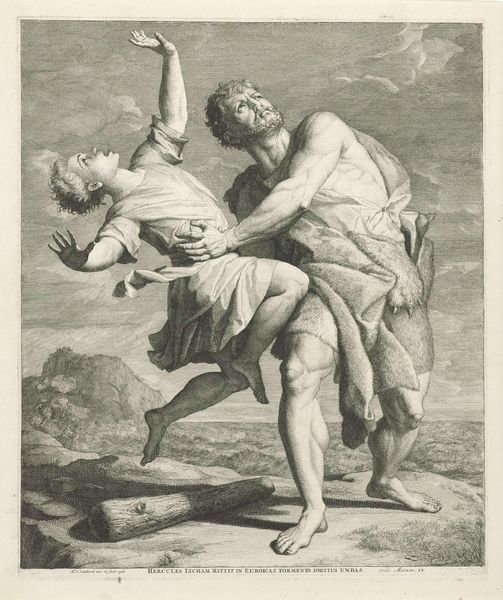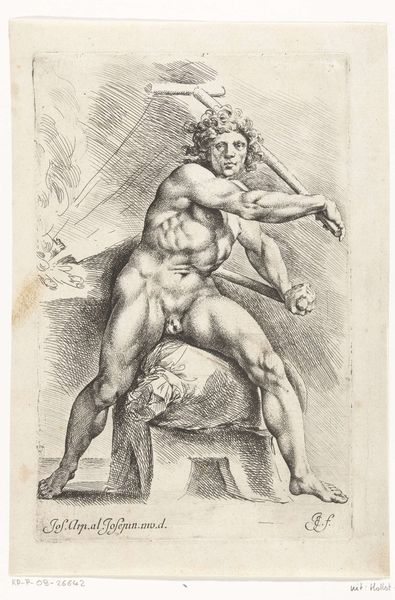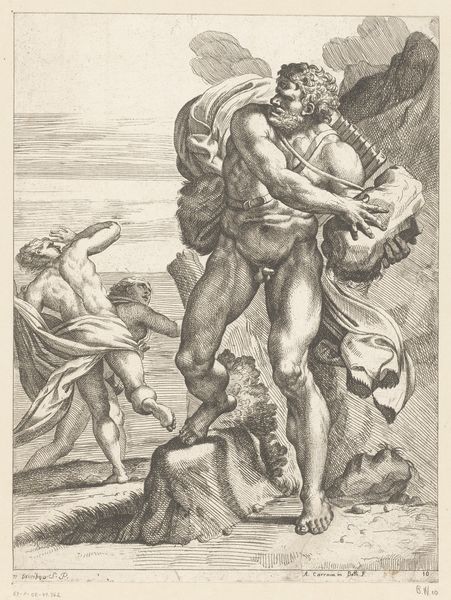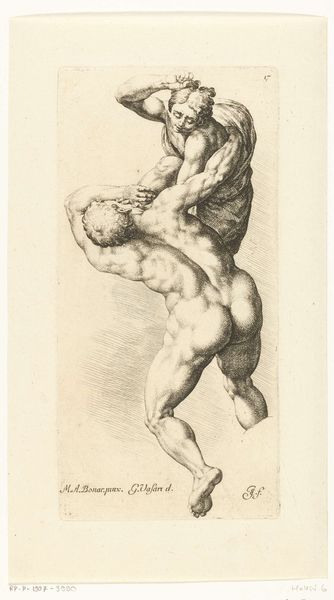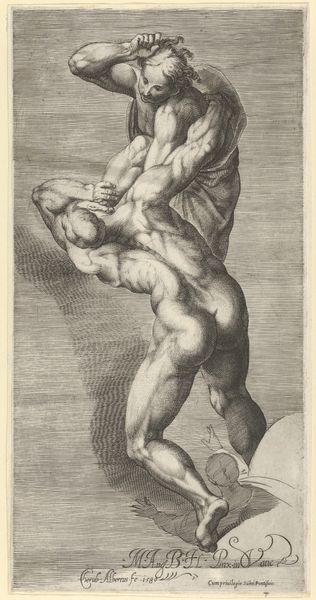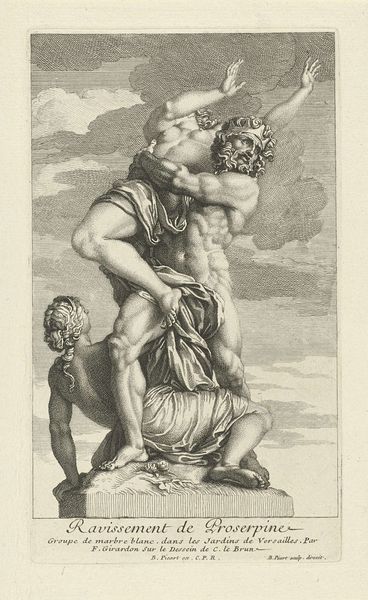
The Rape of a Sabine Woman Seen from the Side, Her Face Visible c. 1598
0:00
0:00
Dimensions: sheet: 41 x 28.4 cm (16 1/8 x 11 3/16 in.)
Copyright: CC0 1.0
Curator: This is Jan Harmensz. Muller's "The Rape of a Sabine Woman Seen from the Side, Her Face Visible", now housed at the Harvard Art Museums. Editor: It's stark, isn't it? The raw musculature dominating the frame, the woman almost limp in his grasp... it speaks volumes about power and vulnerability. Curator: Indeed. Muller, active in the late 16th and early 17th centuries, was deeply influenced by classical antiquity and the Renaissance. The Sabine women abduction was a popular subject, embodying themes of war, conquest, and the establishment of Roman society. Editor: The symbolism is potent. The male figure, so obviously virile and forceful, contrasts sharply with the woman's almost passive resistance. The act of carrying—of claiming—is a recurring motif of dominance throughout history. Curator: Absolutely. And notice the setting: the architectural backdrop lending a sense of civilization, even as this violent act unfolds. It suggests the complex relationship between order and brute force in the creation of societal structures. Editor: It's unsettling how Muller captures the vulnerability of the Sabine woman, rendering her face visible, almost pleading. It challenges the viewer to confront the human cost behind these foundational myths. Curator: A powerful statement, then, about the narratives we choose to celebrate and the histories we often overlook. Editor: Yes, a stark reminder that cultural memory is always selective, and often deeply problematic.
Comments
No comments
Be the first to comment and join the conversation on the ultimate creative platform.





